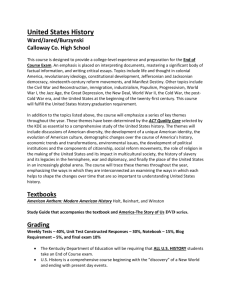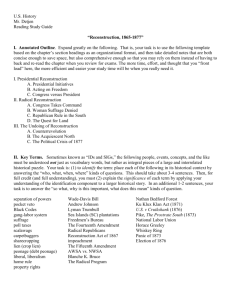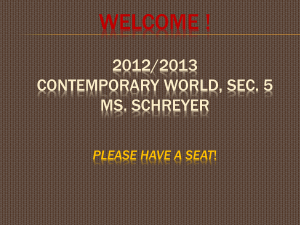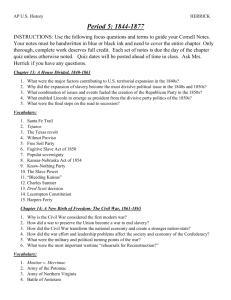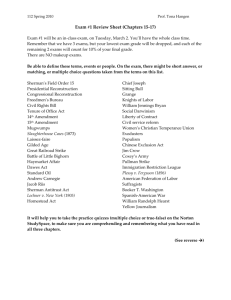Parent Summary (Grade 11) - Baltimore County Public Schools
advertisement
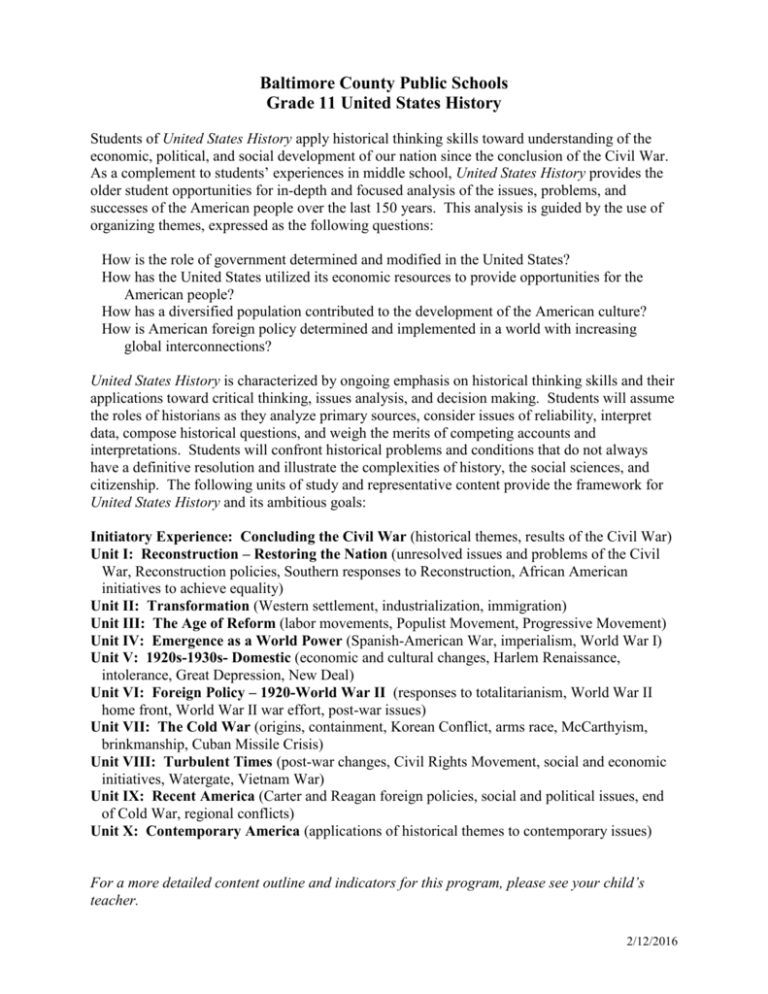
Baltimore County Public Schools Grade 11 United States History Students of United States History apply historical thinking skills toward understanding of the economic, political, and social development of our nation since the conclusion of the Civil War. As a complement to students’ experiences in middle school, United States History provides the older student opportunities for in-depth and focused analysis of the issues, problems, and successes of the American people over the last 150 years. This analysis is guided by the use of organizing themes, expressed as the following questions: How is the role of government determined and modified in the United States? How has the United States utilized its economic resources to provide opportunities for the American people? How has a diversified population contributed to the development of the American culture? How is American foreign policy determined and implemented in a world with increasing global interconnections? United States History is characterized by ongoing emphasis on historical thinking skills and their applications toward critical thinking, issues analysis, and decision making. Students will assume the roles of historians as they analyze primary sources, consider issues of reliability, interpret data, compose historical questions, and weigh the merits of competing accounts and interpretations. Students will confront historical problems and conditions that do not always have a definitive resolution and illustrate the complexities of history, the social sciences, and citizenship. The following units of study and representative content provide the framework for United States History and its ambitious goals: Initiatory Experience: Concluding the Civil War (historical themes, results of the Civil War) Unit I: Reconstruction – Restoring the Nation (unresolved issues and problems of the Civil War, Reconstruction policies, Southern responses to Reconstruction, African American initiatives to achieve equality) Unit II: Transformation (Western settlement, industrialization, immigration) Unit III: The Age of Reform (labor movements, Populist Movement, Progressive Movement) Unit IV: Emergence as a World Power (Spanish-American War, imperialism, World War I) Unit V: 1920s-1930s- Domestic (economic and cultural changes, Harlem Renaissance, intolerance, Great Depression, New Deal) Unit VI: Foreign Policy – 1920-World War II (responses to totalitarianism, World War II home front, World War II war effort, post-war issues) Unit VII: The Cold War (origins, containment, Korean Conflict, arms race, McCarthyism, brinkmanship, Cuban Missile Crisis) Unit VIII: Turbulent Times (post-war changes, Civil Rights Movement, social and economic initiatives, Watergate, Vietnam War) Unit IX: Recent America (Carter and Reagan foreign policies, social and political issues, end of Cold War, regional conflicts) Unit X: Contemporary America (applications of historical themes to contemporary issues) For a more detailed content outline and indicators for this program, please see your child’s teacher. 2/12/2016
